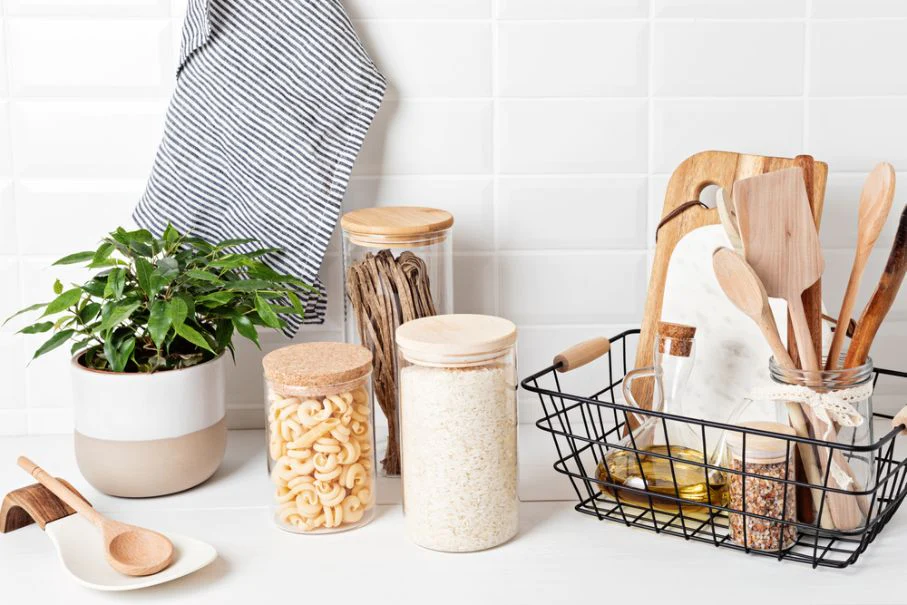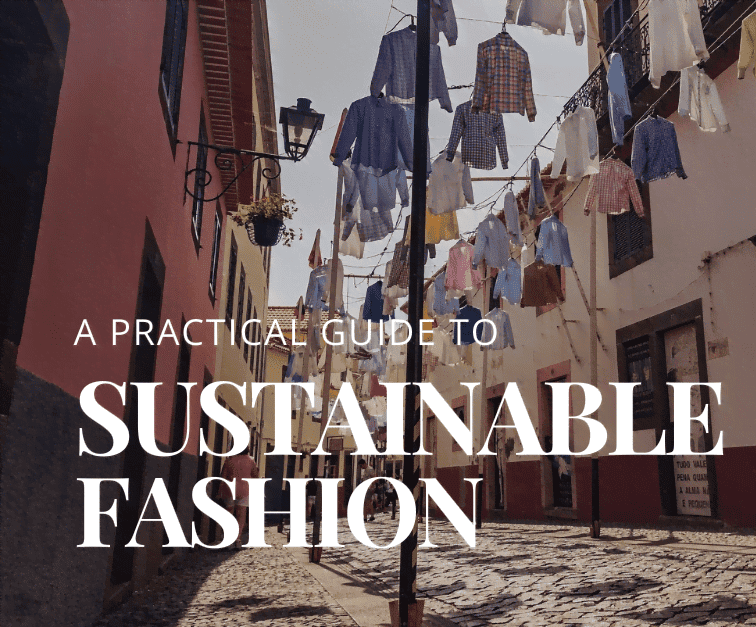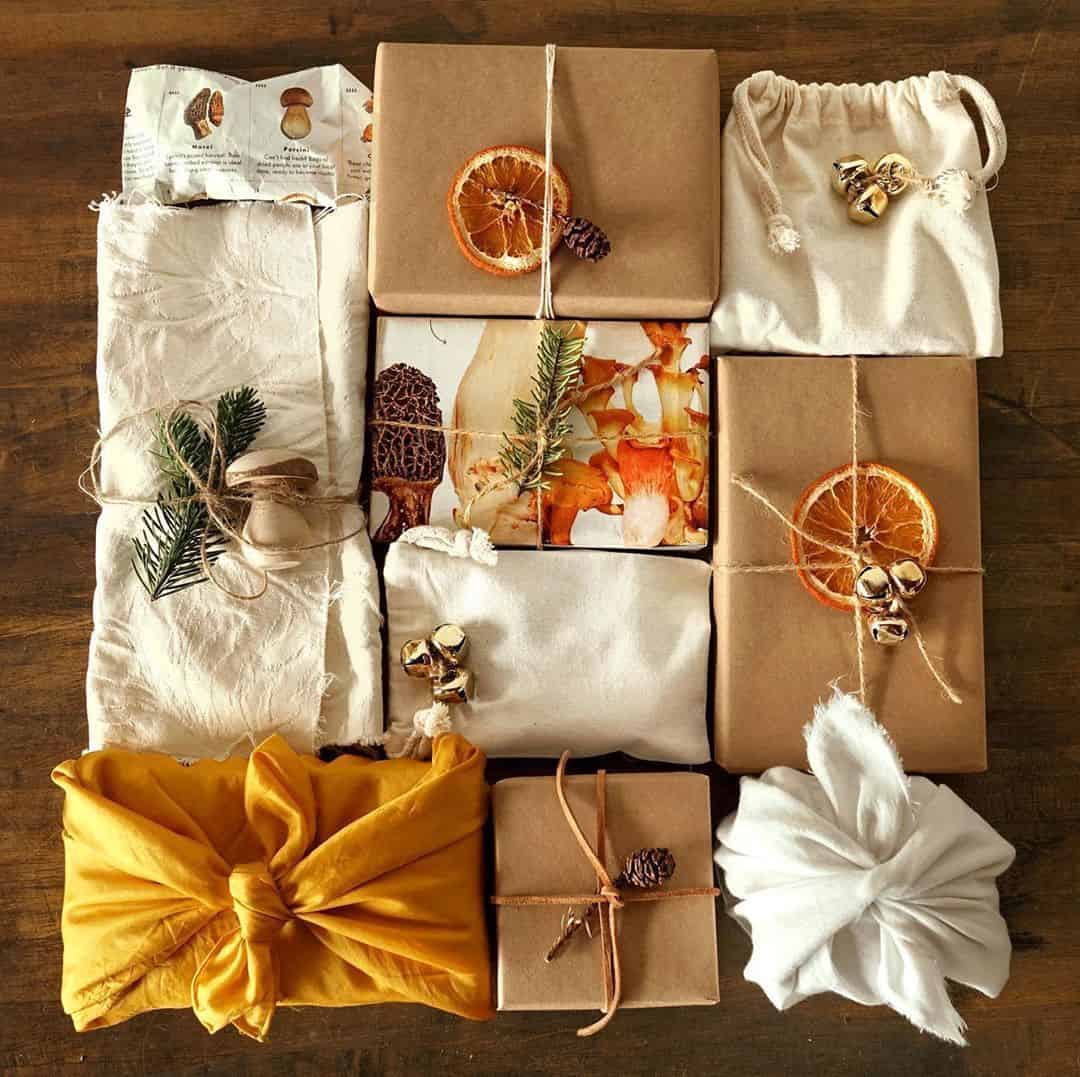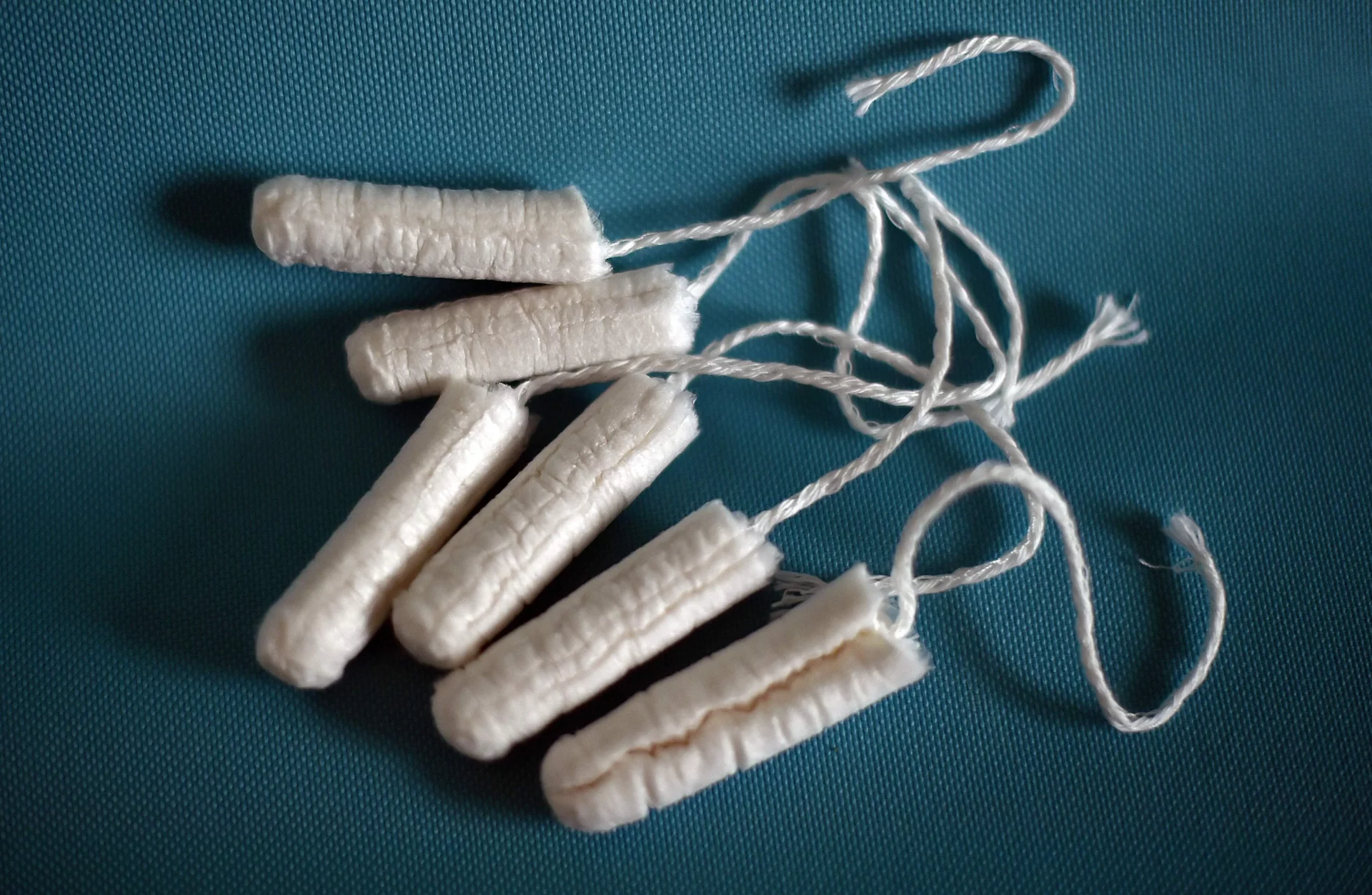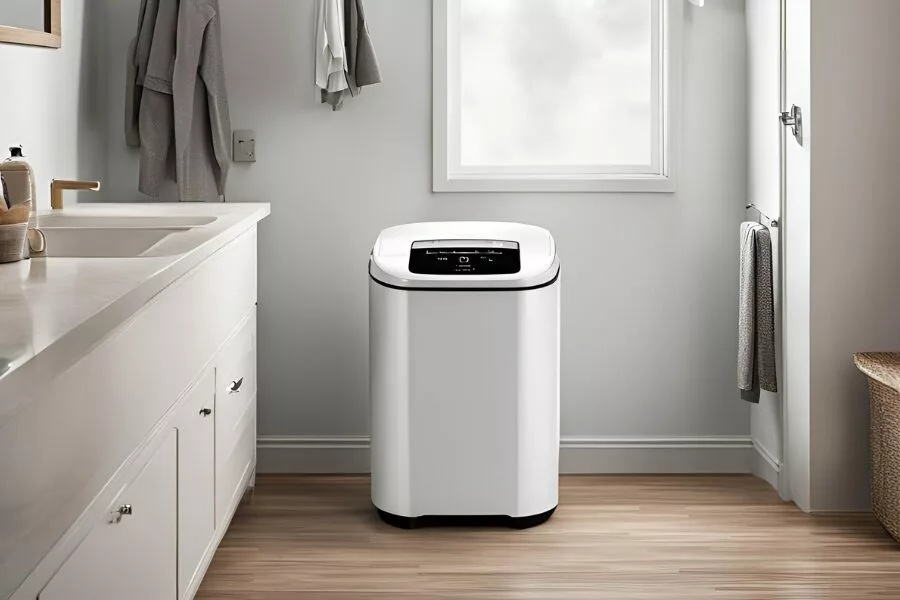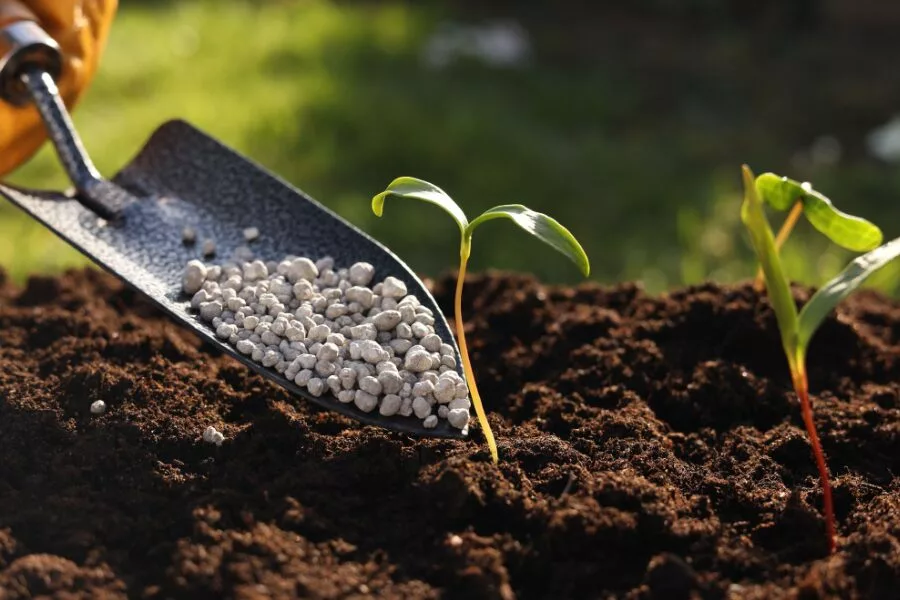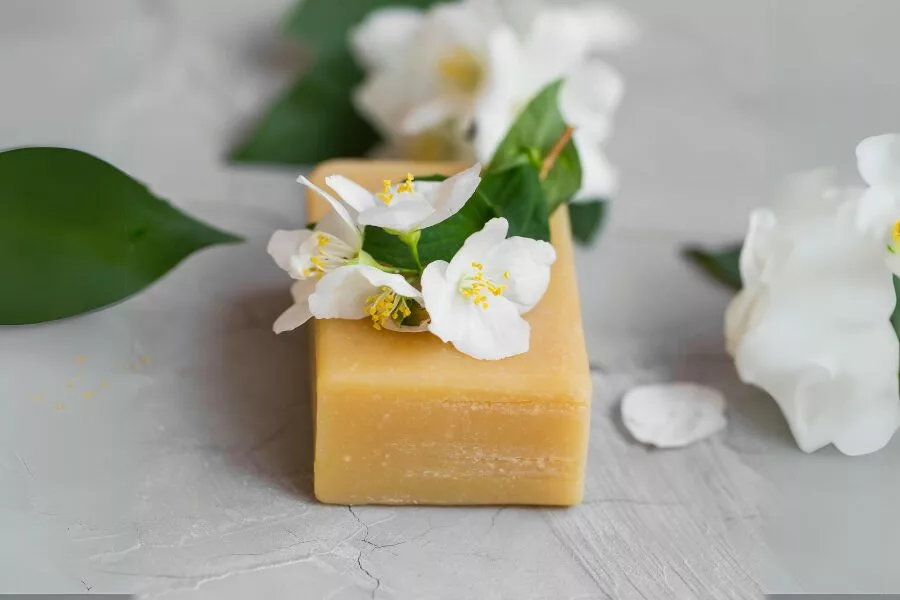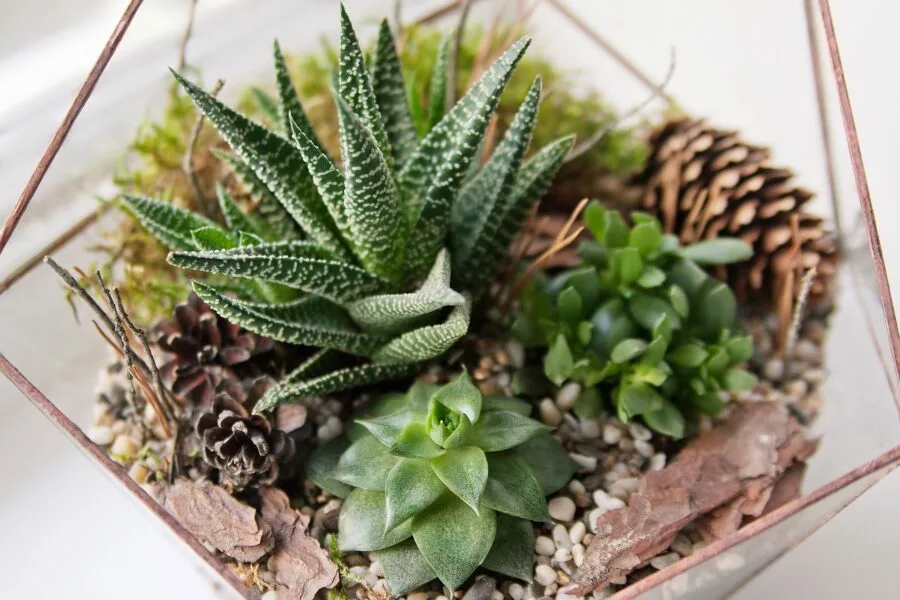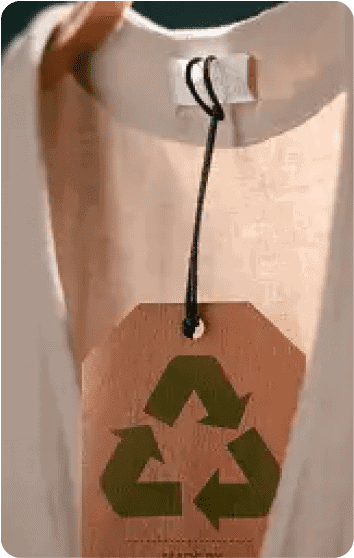Last Updated on September 30, 2024 by
People are becoming more aware of the decisions they make in their daily lives due to the growing concern for sustainability. The usage of environmentally friendly kitchenware is one such option.
Conventional utensils made of plastic or other non-biodegradable materials are a significant source of environmental pollution. But, eco-friendly utensils and kitchenware can assist in cutting down on waste save the environment, and help you adopt a much cleaner and healthier lifestyle.

In this blog post, we will explore the types, advantages, and disadvantages of eco-friendly utensils, as well as how to choose the best ones and where to buy them.
Have a look at some of the greenest eco-conscious cutlery and kitchenware brands and make the way you eat truly sustainable. Don’t forget to check out some hot takes on how to make your eco-friendly utensils last!
10 Eco-Friendly Utensil Brands to Set Your Kitchen Right
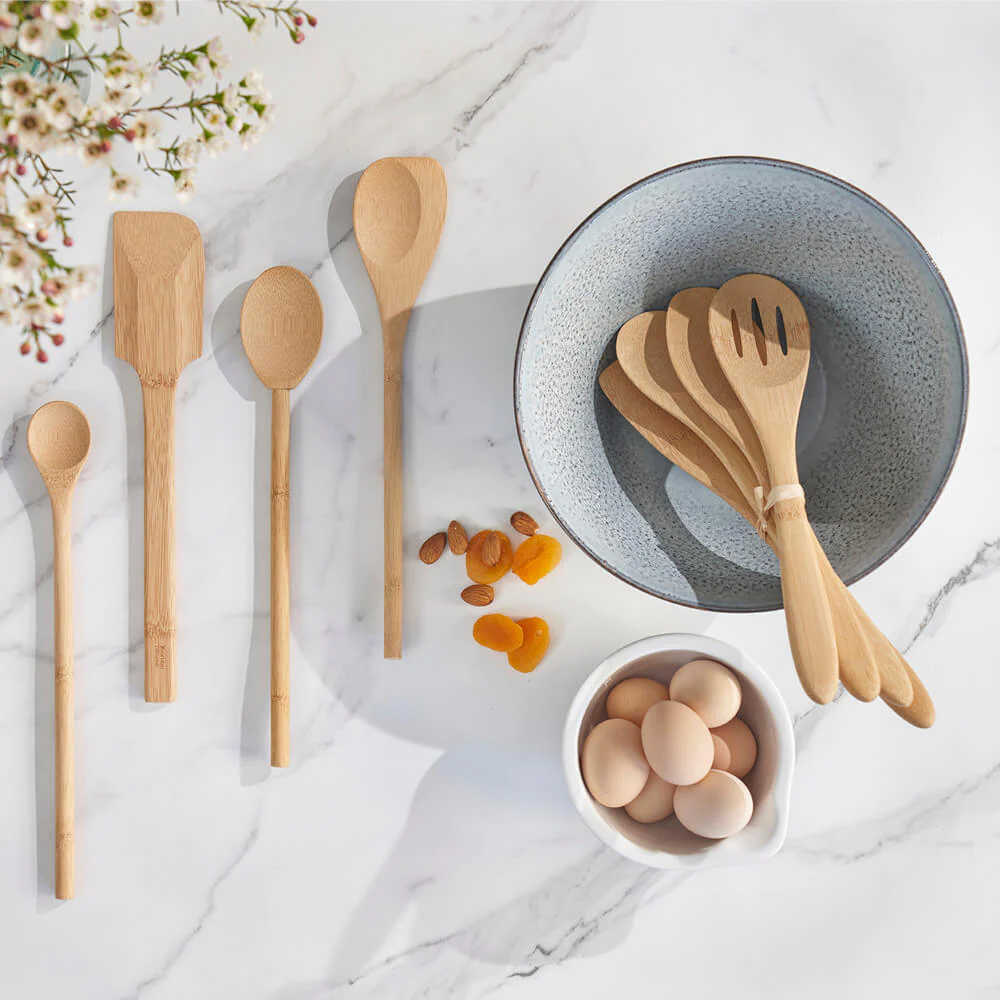
Bambu is a leading brand that specializes in creating eco-friendly dinnerware and sustainable home goods. With a strong commitment to the environment, they offer a range of products made from renewable resources such as bamboo, cork, and more. Their collection includes certified organic items, disposable plates, kitchen utensils, cutlery, and cutting boards.
Established in 2003, Bambu has been on a mission to reduce reliance on plastic by offering people beautiful, non-toxic alternatives made directly from nature. Their ethos is not just about selling products but about providing solutions that resonate with nature’s rhythm.
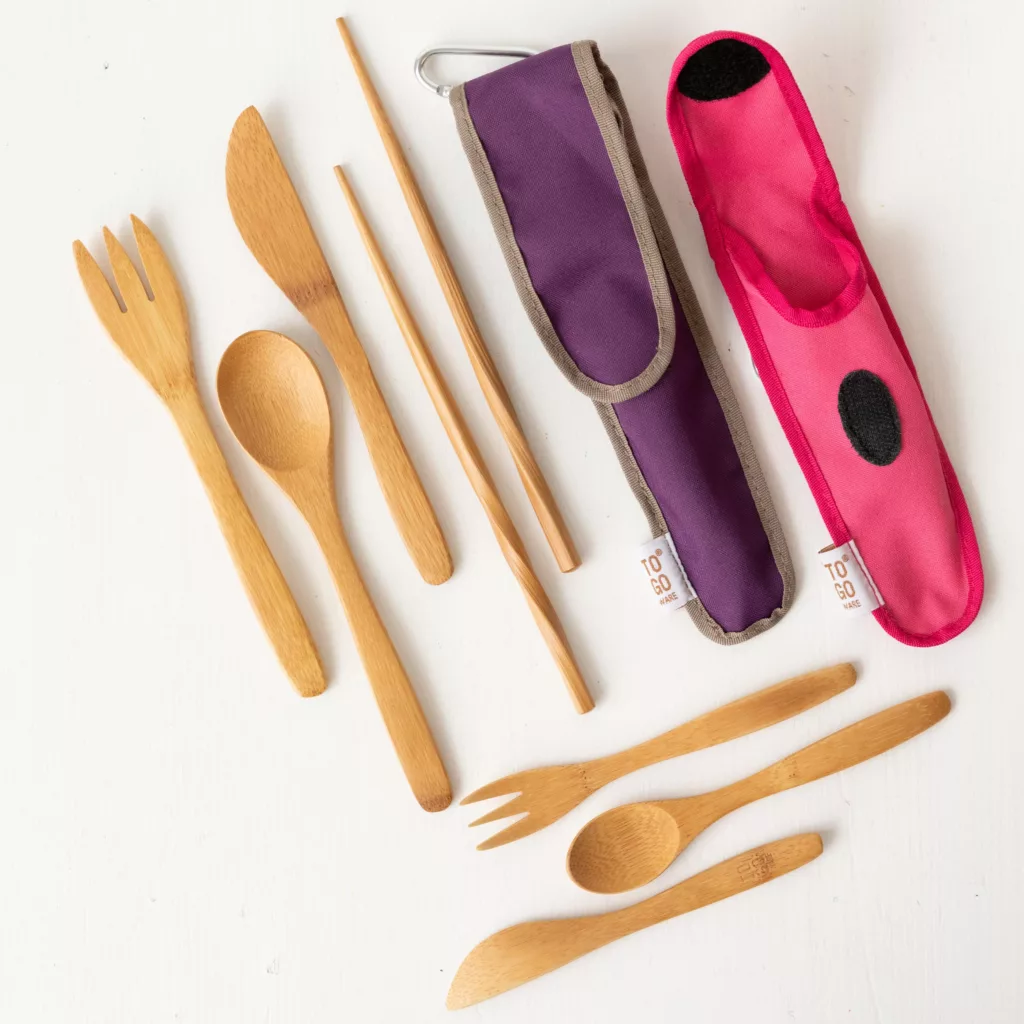
ChicoBag are on a mission to make sustainability both stylish and convenient. Their range of To-Go Ware utensil sets is a testament to this commitment. Crafted with care, each set includes bamboo cutlery that’s perfect for adults, kids, and even parties. Whether you’re looking for the Premium Utensil Set, the Classic version, or even the Kids Bamboo Utensil Set, ChicoBag ensures quality and eco-friendliness in every product.
By choosing these reusable utensils, you’re not just opting for a sustainable dining experience but also contributing to a movement that aims to reduce single-use waste. Embrace a greener lifestyle with ChicoBag’s To-Go Ware utensil sets and be part of the change
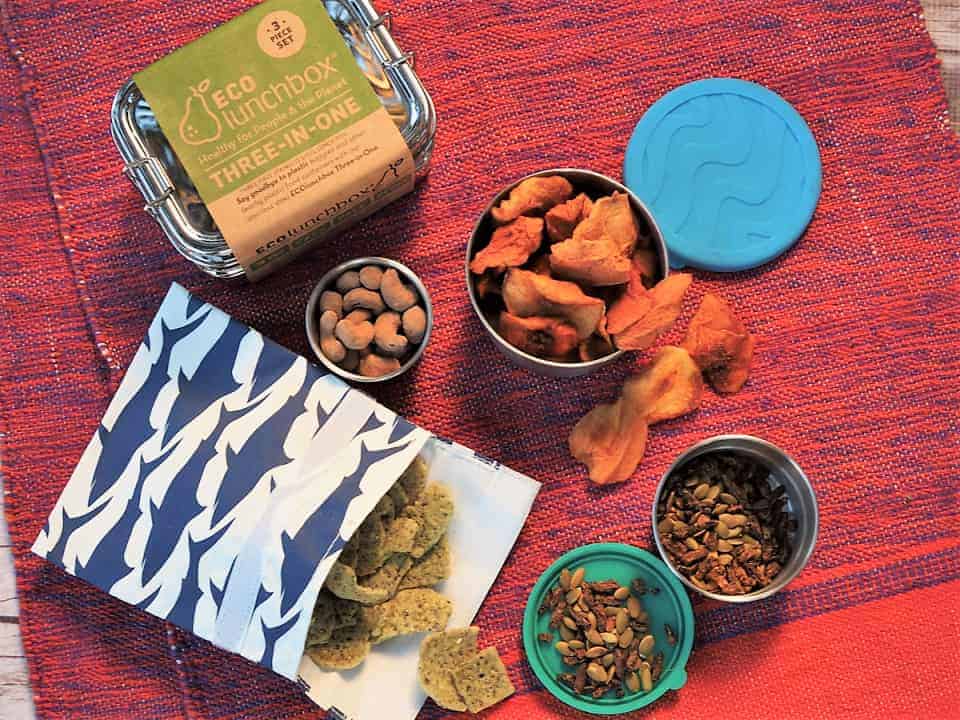
ECOlunchbox is a certified B Corp and a California Green Business that has been leading the charge in eco-friendly living since 2008. With a mission to inspire and empower individuals to bid farewell to plastic, ECOlunchbox offers a range of products that are both health-conscious and environmentally friendly. They specialize in plastic-free food containers, lunchboxes, and bentos crafted from high-quality stainless steel and silicone.
Beyond just selling products, ECOlunchbox is dedicated to educating its community about the importance of sustainable choices and the impact of plastic on our planet. By choosing ECOlunchbox, you’re not just opting for a sustainable dining experience but also joining a movement that champions a plastic-free world.
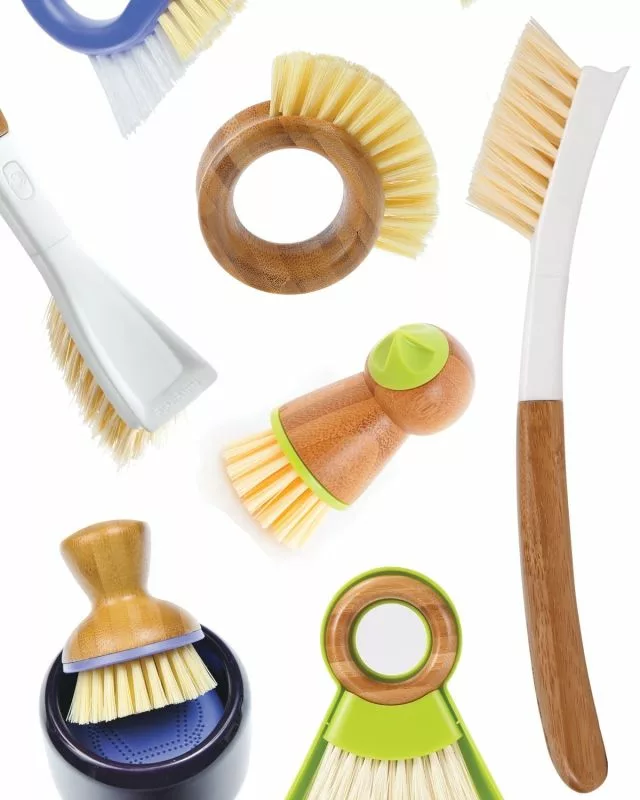
Full Circle is a brand that specializes in creating eco-friendly home and kitchen products. Their stainless steel utensils are made from 18/8 stainless steel, which is a high-quality food-grade stainless steel.
From their innovative kitchen essentials to bathroom necessities, Full Circle Home offers solutions that are not only effective but also environmentally friendly. Their collections, such as ‘Zero,’ emphasize zero waste, while ‘For Good’ introduces compostable household staples that turn into earth rather than microplastics. Whether you’re looking for sustainable storage bags, cleaning tools, or composting solutions, Full Circle Home ensures that every product aligns with its mission of reducing waste and promoting a cleaner, greener planet.
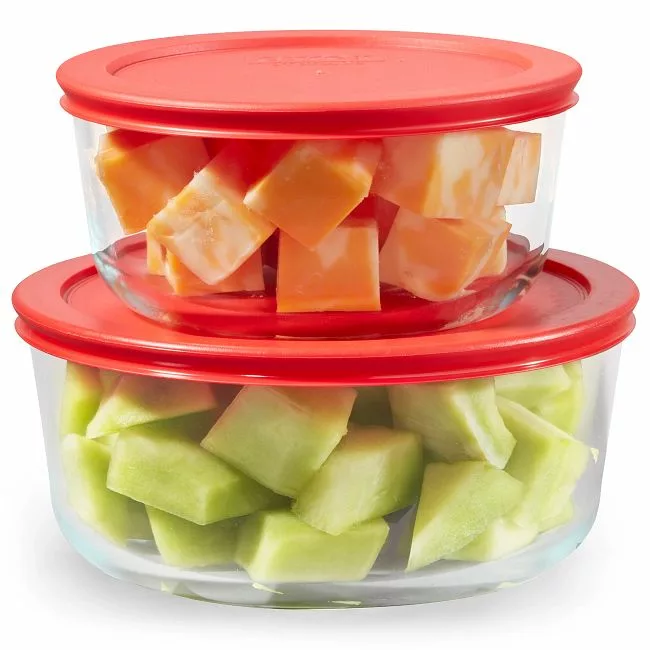
Pyrex stands as an iconic brand, renowned for its high-quality glassware that has graced kitchens and laboratories for over a century. With a commitment to durability and versatility, Pyrex offers a range of kitchen cookware and laboratory glassware that is not only functional but also designed to last. Made from heat-resistant borosilicate glass, Pyrex products are trusted by professionals and home cooks alike for their reliability and timeless appeal.
Whether you’re preparing a family meal or conducting a scientific experiment, Pyrex ensures precision, safety, and excellence in every product. Embrace the legacy of Pyrex and experience the unparalleled quality that has made it a household name.
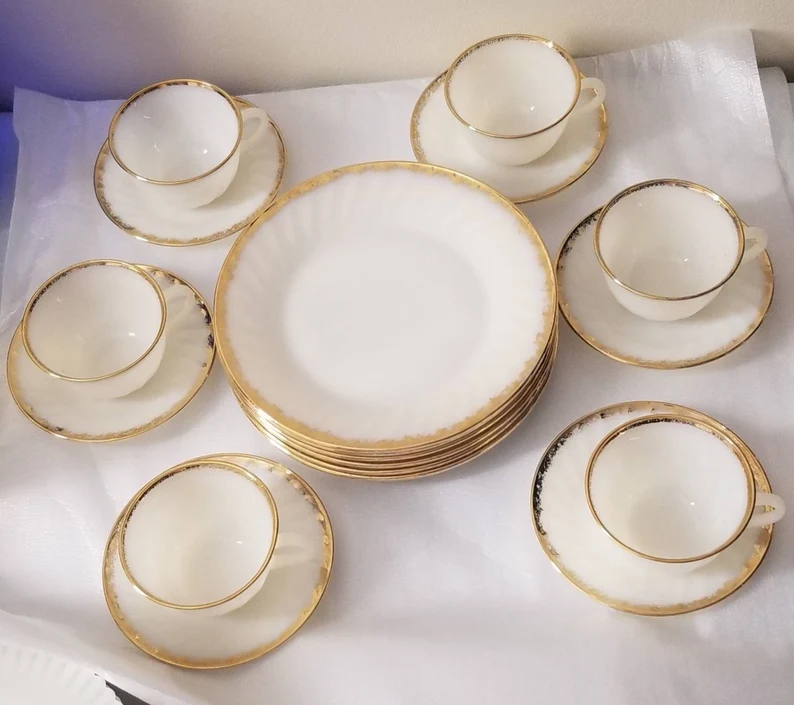
Anchor Hocking, a stalwart in the world of glassware, has been crafting quality products since 1905. With a rich history rooted in American craftsmanship, they offer a wide array of glassware products that range from bakeware to drinkware, serveware, and more. Their dedication to utility and durability is evident in every piece, ensuring that their products not only look elegant but also stand the test of time.
Beyond their classic offerings, Anchor Hocking is also committed to sustainability, with their products being 100% recyclable. Whether you’re baking a family favorite, storing pantry essentials, or serving a refreshing beverage, Anchor Hocking provides the perfect blend of style, functionality, and eco-consciousness.

OXO stands at the forefront of creating everyday products that enhance the ease of living. With a vast array of kitchenware, from food containers to peelers, choppers, and graters, OXO ensures that every product is thoughtfully designed for functionality and durability. Their commitment goes beyond just product design; OXO is a proud member of 1% for the Planet, pledging 1% of their annual sales to empower nonprofits addressing environmental issues.
For over three decades, OXO has been dedicated to making everyday life better at home, and now, they’re also committed to making every day better for the planet. Dive into their range and experience the blend of innovation, quality, and environmental responsibility.
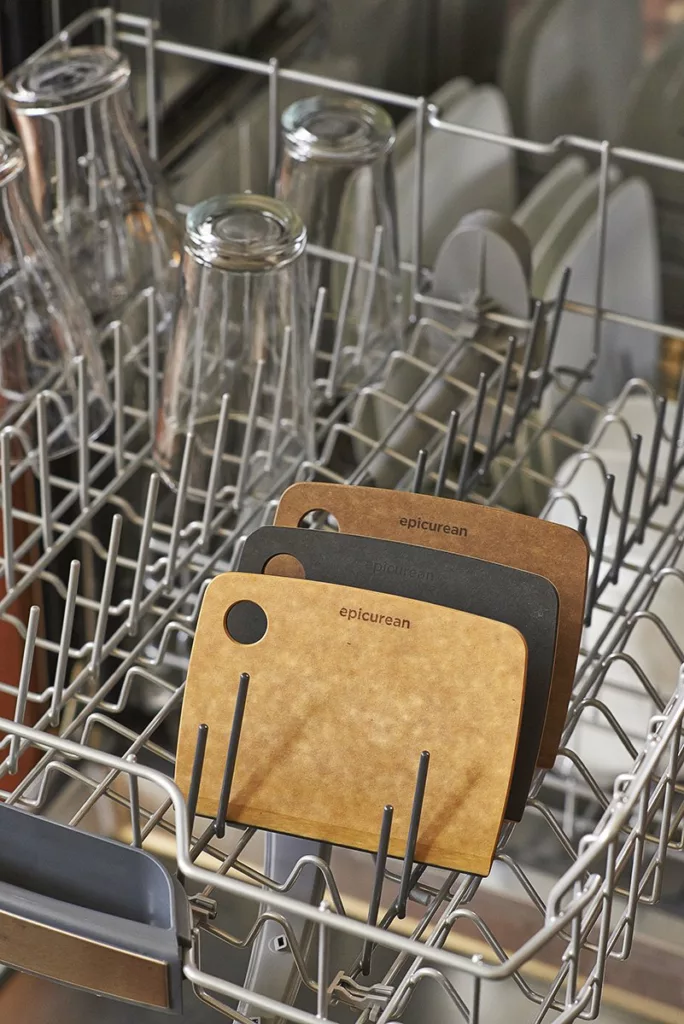
Epicurean sets the standard for modern kitchenware with its range of eco-conscious utensils. Their collection, designed for the discerning chef and home cook alike, boasts tools that not only look and feel like wood but also offer the durability to withstand daily use without fading, cracking, staining, or splitting. These utensils, which include everything from spoons to turners and sauté tools, are a testament to Epicurean’s commitment to quality and sustainability.
Easy to clean and dishwasher safe, they won’t scratch non-stick surfaces, making them an essential part of any well-stocked kitchen. With Epicurean, you’re not just choosing utensils; you’re investing in sustainable tools that elevate your culinary experience.
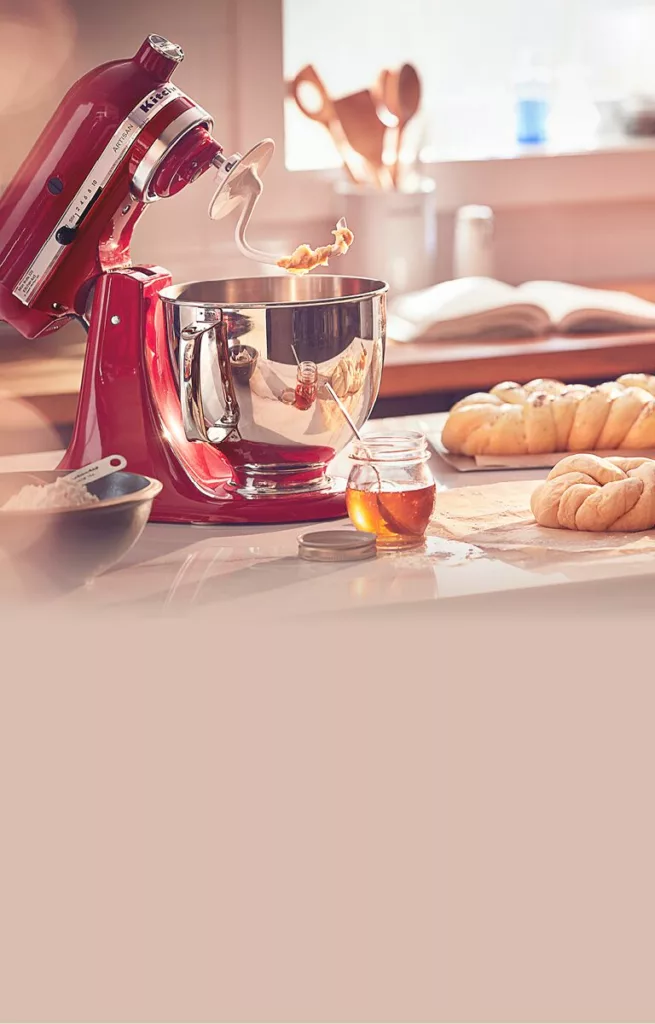
KitchenAid, a name synonymous with quality kitchenware, presents its range of silicone utensils designed for the modern chef. This collection boasts a variety of tools, from ladles and tongs to spatulas and brushes, each crafted with precision and care. The ergonomic handles, combined with high-gloss ABS plastic and triple chrome-plated hang ends, ensure durability and ease of use.
These utensils are not only functional but also embody KitchenAid’s commitment to style and innovation. Whether you’re whipping up a gourmet meal or a quick snack, these silicone utensils promise efficiency, longevity, and a touch of elegance to your culinary endeavors.
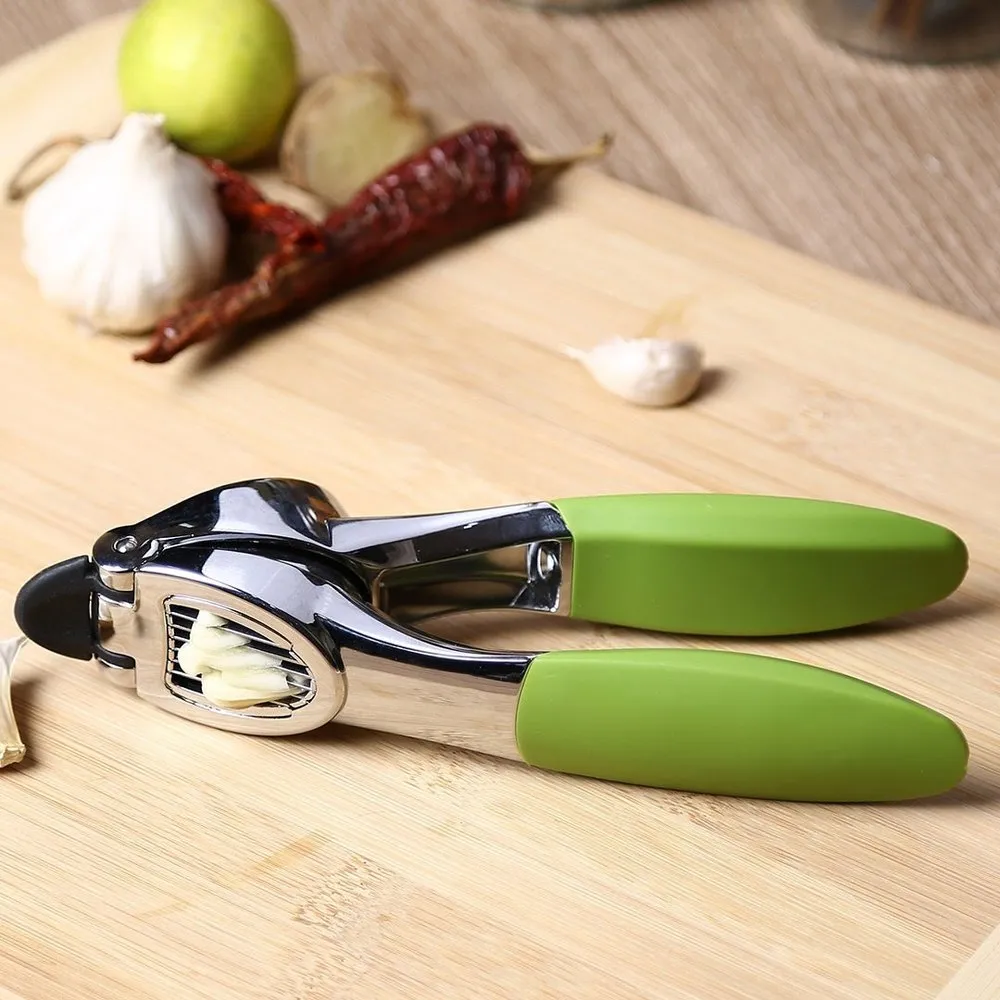
Trudeau International stands as a beacon of innovation and quality in the realm of kitchenware and houseware products. With a legacy that dates back to 1889, Trudeau has been steered by four successive generations, each upholding the values of family and tradition. Their offerings span a wide range, from kitchen utensils to wine accessories, fondue, raclette, and pepper mills.
Trudeau’s commitment to design and development is evident in every product, ensuring that users get a blend of style, functionality, and durability. As a leader in their industry, they not only provide top-tier products but also emphasize the importance of tradition and family values in their corporate culture.
The Environmental Impact of Plastic Cutlery
In today’s world, plastic cutlery is a standard component of takeout dinners, workplace lunches, and even outdoor gatherings.
Plastic cutlery does have a substantial environmental impact, though, and this cannot be disregarded. In this post, we’ll use statistics to examine how plastic cutlery affects the environment.
To start, it’s crucial to remember that plastic cutlery is a single-use item, which means it’s intended to be used just once before being thrown away. The United Nations Environment Programme estimates that 5 trillion plastic bags and other single-use goods are used annually around the world. This also applies to plastic cutlery, a significant source of plastic pollution.

As plastic cutlery is thrown out, it frequently winds up in the water, endangering marine life. Plastic cutlery is one of the top 10 objects discovered during beach cleanups, according to the Ocean Conservancy.
In fact, it is predicted that by 2050, plastic will outnumber fish in the ocean. This alarming number emphasizes the pressing need to deal with the problem of plastic pollution. Plastic cutlery also contributes to terrestrial contamination in addition to marine impact. In the US, just 9% of plastic garbage gets recycled, according to the Environmental Protection Agency.
Microplastics are tiny plastic fragments with a length of under 5 millimeters. They may develop as bigger plastic objects, like silverware, degrade over time. Since they may be consumed by marine life and make their way into the food chain, microplastics pose a serious threat to the ecosystem.
It is impossible to overlook how plastic cutlery affects the environment. It leads to the creation of microplastics, land, and marine pollution, as well as greenhouse gas emissions. As buyers, we can limit the amount of plastic cutlery we use by opting for environmentally friendly substitutes like bamboo or stainless steel utensils.
We may also support programs like plastic bag bans and recycling efforts that are aimed at reducing plastic waste. Even little actions may have a significant effect on the environment and contribute to the development of a more sustainable future.
How Using Eco-Friendly Cutlery Can Help?
The use of eco-friendly kitchenware helps to protect the environment to the greatest extent possible. Forks, spoons, and knives manufactured of traditional plastic are known to have an adverse effect on the environment since they are non-biodegradable and take hundreds of years to break down.
Comparatively, biodegradable and sustainable materials like bamboo, stainless steel, glass, and wood are used to make eco-friendly kitchenware, among others. These materials are safe for the environment and human health since they are non-toxic and devoid of dangerous compounds.
Sustainable alternatives to single-use plastic utensils include reusable and robust eco-friendly cutlery. They require less frequent replacement because they are very simple to maintain and clean.
Individuals may lessen their carbon footprint and help create a more sustainable future by choosing environmentally friendly kitchenware. In conclusion, choosing eco-friendly kitchenware is a sensible decision that may have a big effect on the environment.
Are Eco-Friendly Utensils Compostable?
Eco-friendly utensils are compostable and much better than conventional plastic or melamine utensils, which take hundreds of years to degrade.
The label indicates that the items can easily break down into organic material that can be repurposed as fertilizer and manure.
Most environmentally friendly utensils made of bamboo, wood, and cornflour may be composted. These substances can be degraded by microbes and other organic processes because they are biodegradable.
Compostable, environmentally friendly utensils may be disposed of in a compost bin or pile and broken down to produce nutrient-rich soil that can be used to nourish plants.
Unlock Your Savings with Exclusive Offer Coupons
Save big while shopping for sustainable products! Grab your exclusive coupons today!

Are All Eco-Friendly Kitchenware Items Compostable?
It’s crucial to remember that not all environmentally friendly cutlery can be composted. Even if they are biodegradable, not all environmentally friendly utensils are necessarily compostable.
For instance, certain kitchenware could be constructed of plant-based polymers that must be exposed to intense heat to degrade.
Adhere to suitable composting procedures while composting eco-friendly kitchenware. When adding eco-friendly kitchenware to the compost pile or bin, it should be broken down into little pieces. As a result of the material’s increased surface area, the composting process is sped up.
Compostable cutlery sets are the way to go
Make sure the compost bin or pile is correctly balanced with a mixture of nitrogen- and carbon-rich elements. Carbon-rich substances, such as wood chips and dried leaves, provide biodegradable materials’ microbes the energy they require to break them down.
Food scraps and grass clippings are examples of nitrogen-rich items that give microbes the nutrition they require to break down the substance. Eco-friendly cookware may be composted to help decrease waste, enhance soil quality, and lessen the need for artificial fertilizers.
Composting biodegradable items releases nutrients into the soil that can aid in the growth of stronger, healthier plants. By keeping organic waste out of landfills, composting eco-friendly cookware can also assist in lowering greenhouse gas emissions.
It’s crucial to verify the box and carefully study the manufacturer’s instructions because not all eco-friendly utensils are biodegradable. Eco-friendly utensils should be composted according to recommended procedures to guarantee a speedy and effective decomposition of the material.
Eco-friendly kitchenware may be composted to decrease waste, enhance soil quality, and save the environment.

Tips to Make Eco-Friendly Kitchenware Last
When it comes to using eco-friendly utensils, there are several things to keep in mind to maximize their benefits and ensure their longevity. Here are some tips to help you make the most of your eco-friendly utensils-
Proper Care
Proper maintenance is among the most crucial considerations when using eco-friendly kitchenware. It’s important to read and carefully follow the manufacturer’s directions since various materials require different cleaning procedures.
For instance, because of the intense heat, wooden utensils should be hand-washed rather than put in the dishwasher. In a similar vein, bamboo cookware has to air dry to avoid warping. Your eco-friendly kitchenware may be kept as long as possible by giving them the proper maintenance.
Storage
Proper storage can also help to prolong the life of eco-friendly utensils. For instance, storing bamboo utensils in a dry, well-ventilated area can prevent mold and mildew growth.
Similarly, metal utensils should be stored in a cool, dry place to prevent rust. By storing your eco-friendly utensils properly, you can prevent damage and ensure they last as long as possible.
Avoid Extreme Temperatures
Extreme temperatures may cause eco-friendly dishes to break. For instance, when left in the sun, metal utensils can get quite hot, while bamboo and wooden utensils might distort or shatter when exposed to extremely low temperatures. To prevent damage, it’s crucial to keep your environmentally friendly kitchenware out of very hot or cold environments.
Reusability
One of the main benefits of eco-friendly utensils is their reusability. It’s important to use them repeatedly to maximize their environmental benefits.
For instance, instead of using single-use plastic utensils, you can bring your own eco-friendly utensils to work or when you go out to eat.
Proper Disposal
It’s crucial to properly dispose of eco-friendly kitchenware when the time comes. Check with your local recycling program to find out the best approach to get rid of your environmentally friendly kitchenware because various materials call for different disposal techniques.
For instance, whereas metal utensils may be recycled, wooden utensils can be composted. You may contribute to environmental preservation and trash reduction by properly disposing of your environmentally friendly kitchenware.

How to clean utensils in an eco-friendly way?
Cleaning utensils in an eco-friendly way is essential to maintain a sustainable lifestyle. Here are some ways to clean your utensils in an eco-friendly way:
Use natural cleaning products
Instead of using chemical-based cleaning agents, opt for natural cleaning products like vinegar, baking soda, and lemon juice. These natural products are effective in removing stains and bacteria and are gentle on the environment.
Avoid disposable cleaning products
Reusable cleaning supplies including paper towels, wipes, and sponges should be avoided. Use a washable cloth or a sponge composed of cellulose or other natural materials, such as loofah. After usage, these materials may be composted because they degrade naturally.
Hand wash your utensils
While a dishwasher uses a lot of water and electricity, avoid using it to clean your utensils. Instead, hand-wash your cutlery with water and natural cleaning agents. To wash your utensils, use a basin as opposed to running water continually.
Use a dishwasher efficiently
If you must use a dishwasher, make sure to load it efficiently and use the eco-mode setting. Avoid pre-rinsing your utensils before putting them in the dishwasher as it wastes water.
Dry your utensils naturally
Avoid using an electric dryer to dry your utensils. Instead, dry them naturally by placing them on a drying rack or wiping them with a cloth.
Conclusion
Environmentally friendly utensils are a great substitute for conventional plastic cutlery. Before making a decision based on personal needs and preferences, it is crucial to weigh the advantages and disadvantages of each type. Also, eco-friendly utensil cleaning is essential for upholding a sustainable way of living. We can reduce our environmental footprint by utilizing natural cleaning solutions, avoiding throwaway cleaning products, and hand-washing kitchenware.
By making simple yet effective eco-friendly choices in our daily lives, we can all contribute towards creating a more sustainable future for generations to come. Using eco-friendly utensils and adopting eco-friendly cleaning practices is just one of the many ways we can make a positive impact on the environment.
Ready to make a positive impact on our planet? Explore Ecowiser’s range of products and take a meaningful step towards sustainable living. Every choice counts. Be the change today!
Want to read more like this?
Get similar stories and a free sustainability checklist delivered to your inbox.

Like our content?
Get similar stories and a free sustainability checklist delivered to your inbox.


